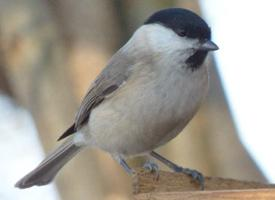
Weights and measures
| Length | from 13 to 14 cm |
|---|
Animal description
The Azure Tit (Cyanistes cyanus), also known as the Azure Blue Tit or the Blue-cheeked Tit, is a small, strikingly vibrant passerine bird that belongs to the tit family, Paridae. This bird is primarily found across Central Asia, extending through regions such as Siberia, Kazakhstan, Mongolia, and parts of Iran and Afghanistan, inhabiting riverine forests, woodland edges, and areas with scattered trees and shrubs. It prefers environments near water bodies, where it can easily find insects and seeds, which comprise the bulk of its diet.Characterized by its distinctive azure-blue plumage, the Azure Tit presents a captivating sight. The intensity of its blue coloration is complemented by a white face and underparts, creating a sharp contrast that is visually striking. The bird's back and wings share the same vivid blue hue, while its tail is also blue with white outer feathers. A notable feature is the black stripe running through its eyes, extending from the beak to the sides of its neck, which accentuates its bright white cheeks. Male and female Azure Tits are similar in appearance, though males may exhibit slightly brighter coloration.
The Azure Tit is a small bird, measuring about 12-14 cm in length and weighing between 9 to 12 grams. Despite its diminutive size, it is known for its agility and vivacity. It is an active forager, often seen hanging upside down on branches as it searches for insects, seeds, and fruits. During the winter months, it may also visit bird feeders, bringing a splash of color to the otherwise bleak landscape.
Breeding season for the Azure Tit occurs in the spring when males court females with their melodic songs and aerial displays. They are cavity nesters, often utilizing natural holes in trees or taking over abandoned woodpecker nests. The female lays a clutch of 6 to 12 eggs, which she incubates for about two weeks. Both parents are involved in feeding the altricial chicks, which fledge approximately three weeks after hatching.
The Azure Tit is a sociable bird, frequently forming mixed feeding flocks with other tit species during the non-breeding season. This behavior not only aids in locating food but also provides protection against predators. Its call is a pleasant mix of chirps and trills, adding to the auditory landscape of its habitat.
While the Azure Tit is not currently considered endangered, it faces threats from habitat destruction and fragmentation, particularly due to logging and agricultural expansion. Conservation efforts are essential to ensure the preservation of its natural habitats and the overall biodiversity of the regions it inhabits. Bird enthusiasts and conservationists alike admire the Azure Tit for its beauty and the vibrancy it brings to its natural surroundings, making it a cherished species among birdwatchers and nature lovers.
Similar Animals
New photos of animals
Top 10 animals
- Dolphin gull (Leucophaeus scoresbii)
- Japanese macaque (Macaca fuscata)
- Stone loach (Barbatula barbatula)
- Greek tortoise (Testudo graeca)
- Galápagos tortoise (Geochelone nigra complex)
- Diana monkey (Cercopithecus diana)
- Russian tortoise (Testudo horsfieldii)
- Moustached guenon (Cercopithecus cephus)
- Galápagos penguin (Spheniscus mendiculus)
- Common flying dragon (Draco volans)


